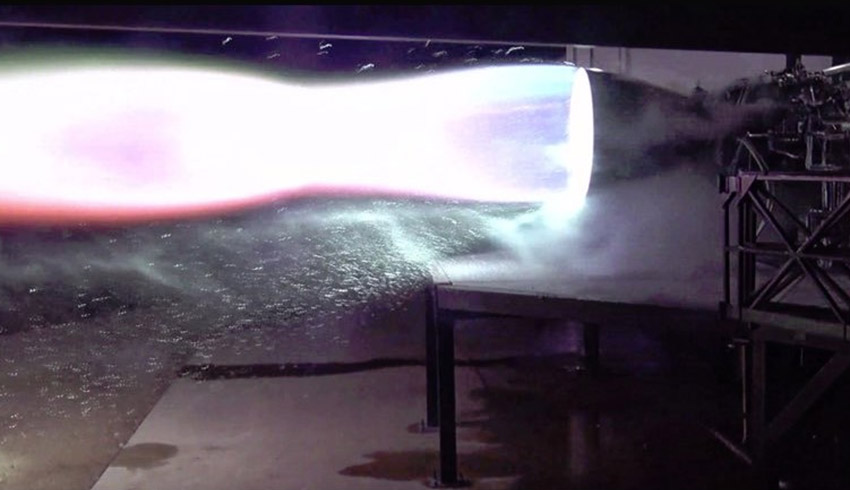The engine fired at about 60 per cent of its rated thrust during the test firing. The Raptor is powered by methane and liquid oxygen propellants and has been worked on for many years by SpaceX, with the first tests on the engine conducted in 2016.
SpaceX founder and chief executive Elon Musk announced the test during a series of tweets, before providing video footage of the firing.
Since the first tests of the engine, the Raptor has seen a series of redevelopments, Musk tweeted last December.
Musk also confirmed that SpaceX will develop "optimised versions" for the Raptor for the Starship's upper stage and lower booster stage, but for now, will create a single version of the engine for both stages.
“Initially making one 200 metric ton thrust engine common across ship & booster to reach the moon as fast as possible,” Musk tweeted on 31 January. “Next versions will split to vacuum-optimized (380+ sec Isp [specific impulse]) & sea-level thrust optimized (~250 ton).”
The testing took place in SpaceX's facilities in McGregor, Texas, and will eventually be taken to south Texas where it will be installed on the Starship hopper.
SpaceX is developing Starship to take people to and from the moon, Mars and other destinations through the solar system.
Musk's company is also building a reusable rocket called the Super Heavy, which will serve as the booster for Starship.
SpaceX is aiming for its first mission to Mars in 2022, if development and testing go to plan, with the objectives to be to confirm water resources, identify hazards and install initial power, mining and life support infrastructure.
A second, and this time crewed, mission is set for 2024, with the aim of building a propellant depot and preparing for future crewed flights.
SpaceX will also use the first ships from these missions to serve as the beginnings of a first Mars base, with the aim of building a "thriving city and eventually a self-sustaining civilisation on Mars".
As well as interplanetary transport, Starship is designed to deliver satellites to Earth orbit and beyond.

